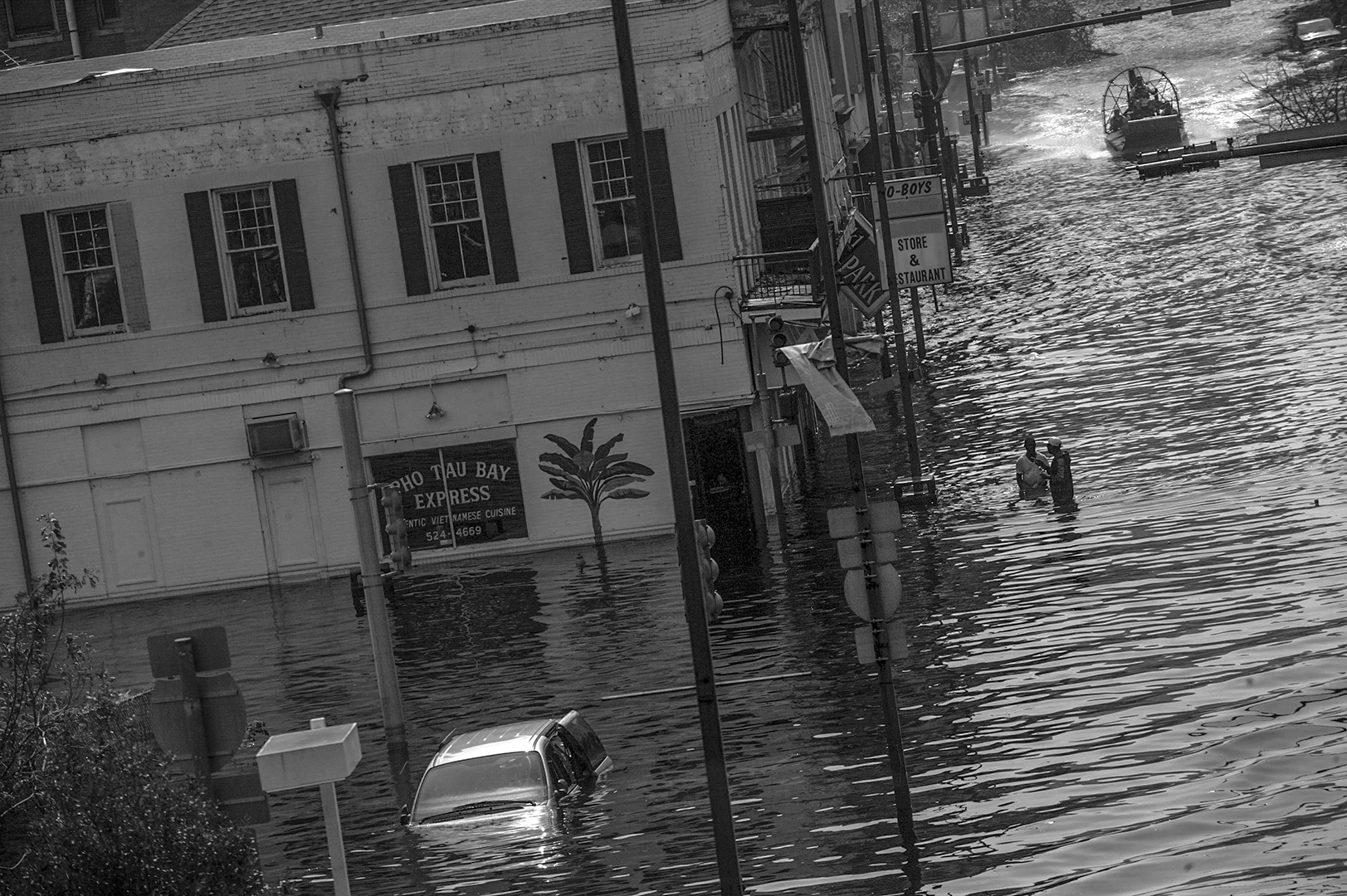
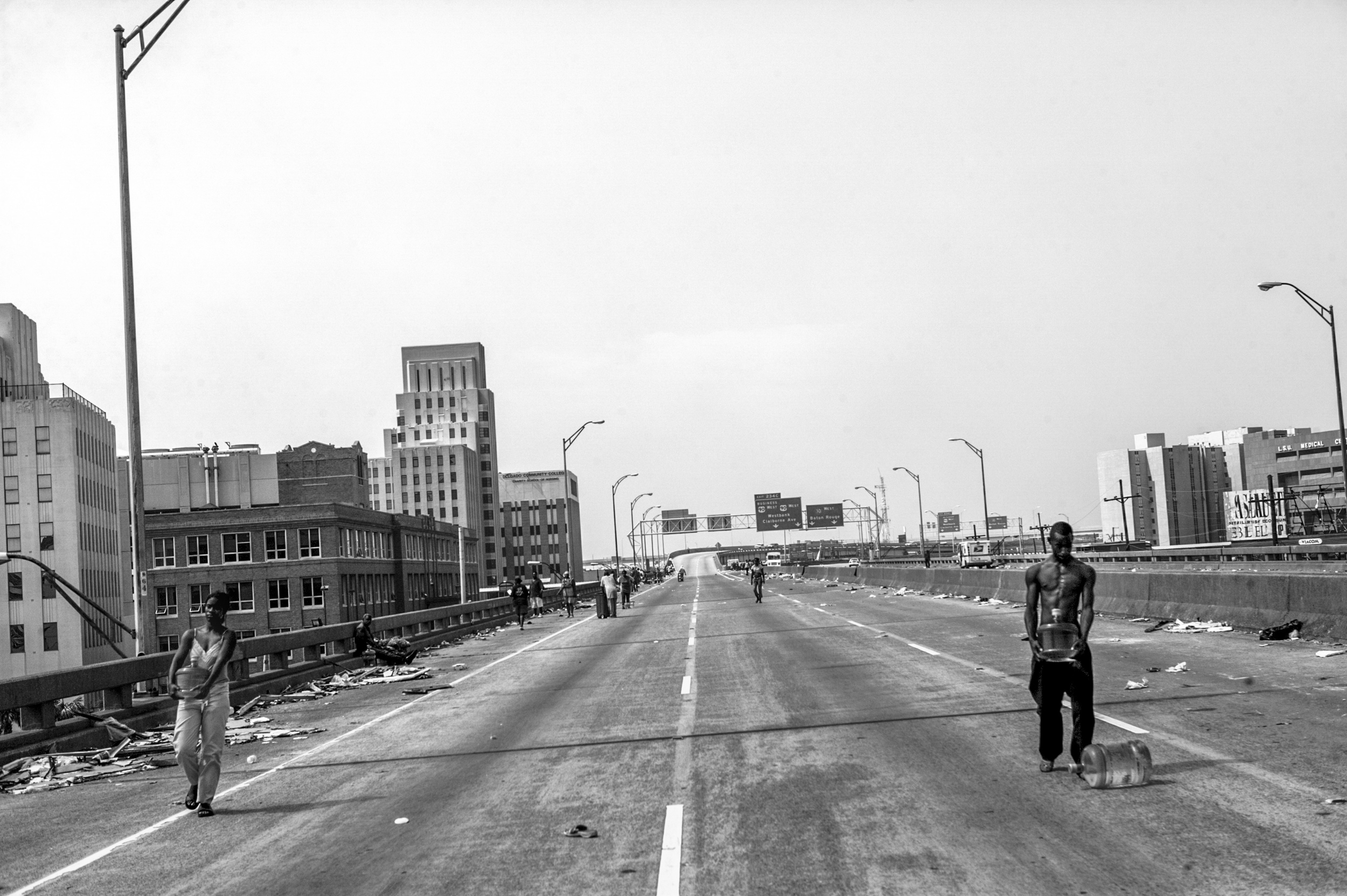
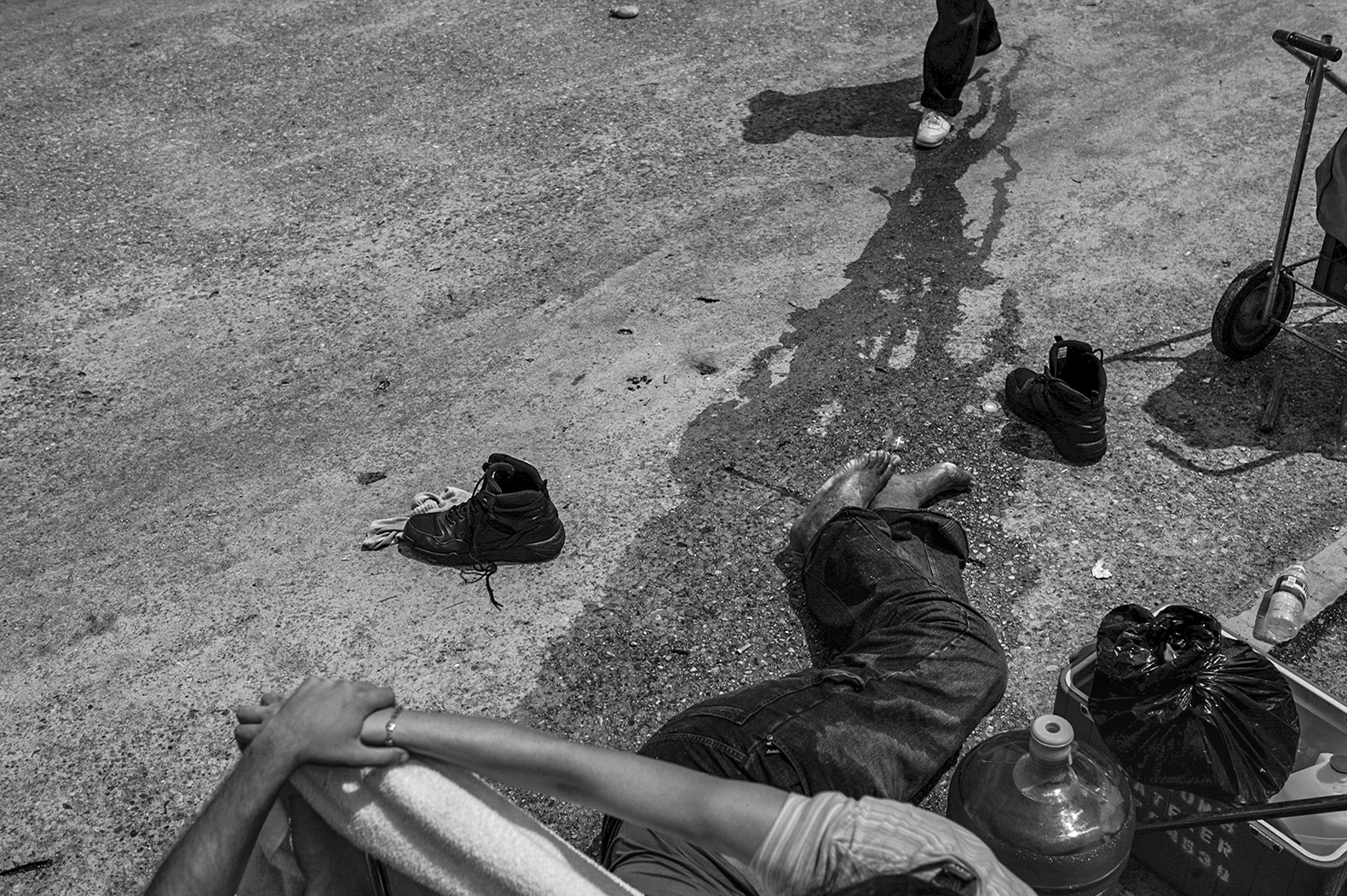
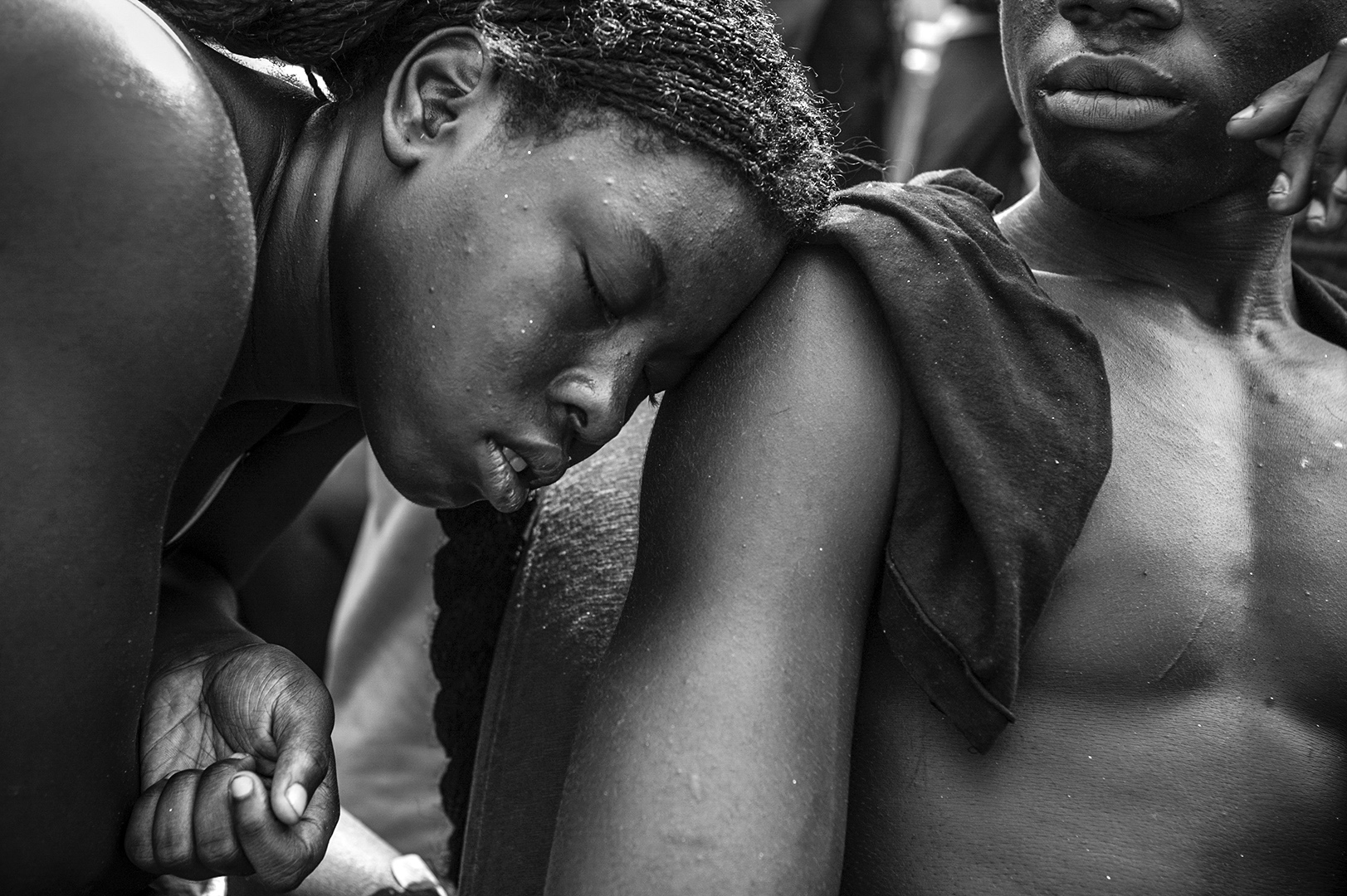
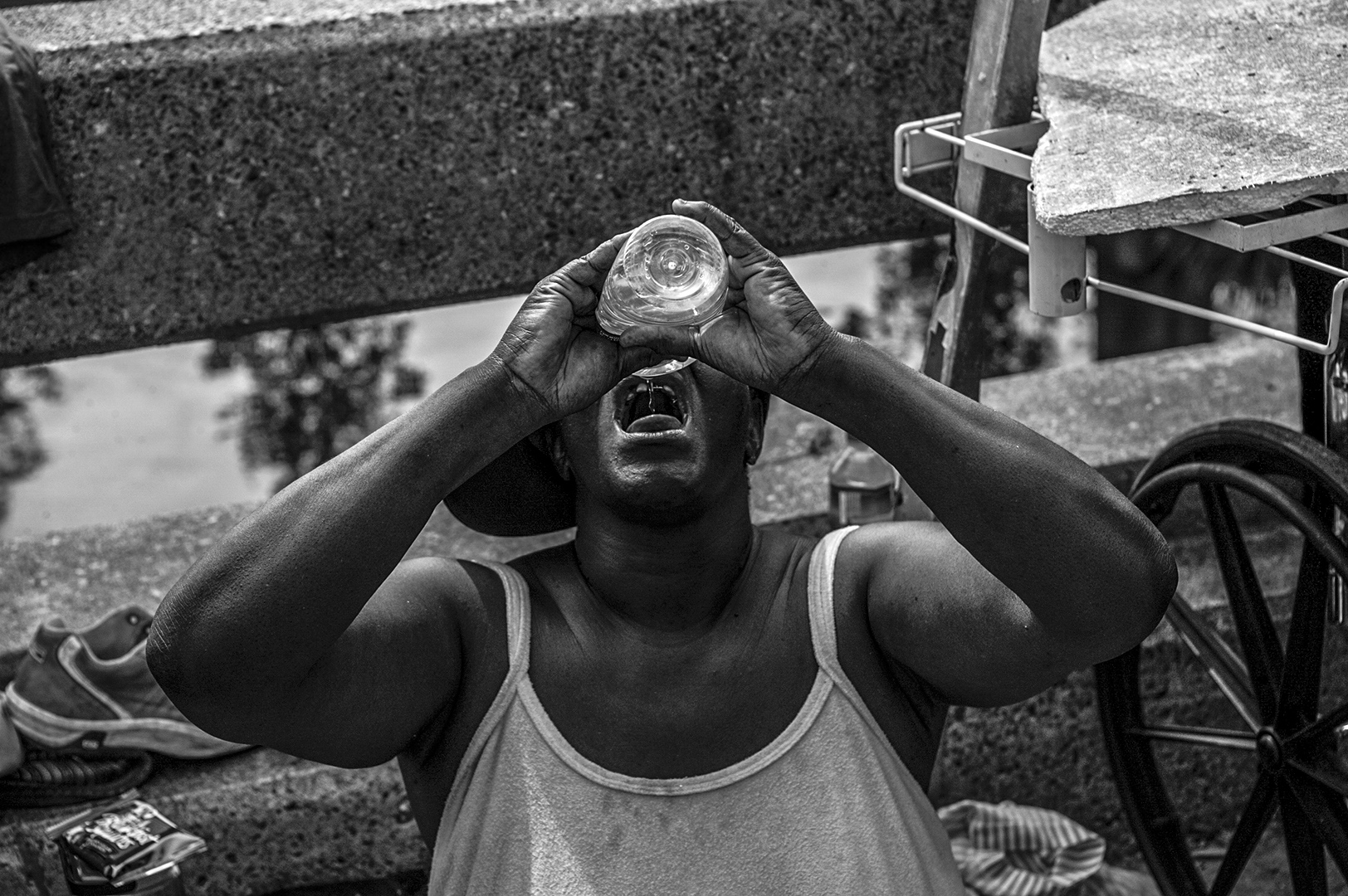

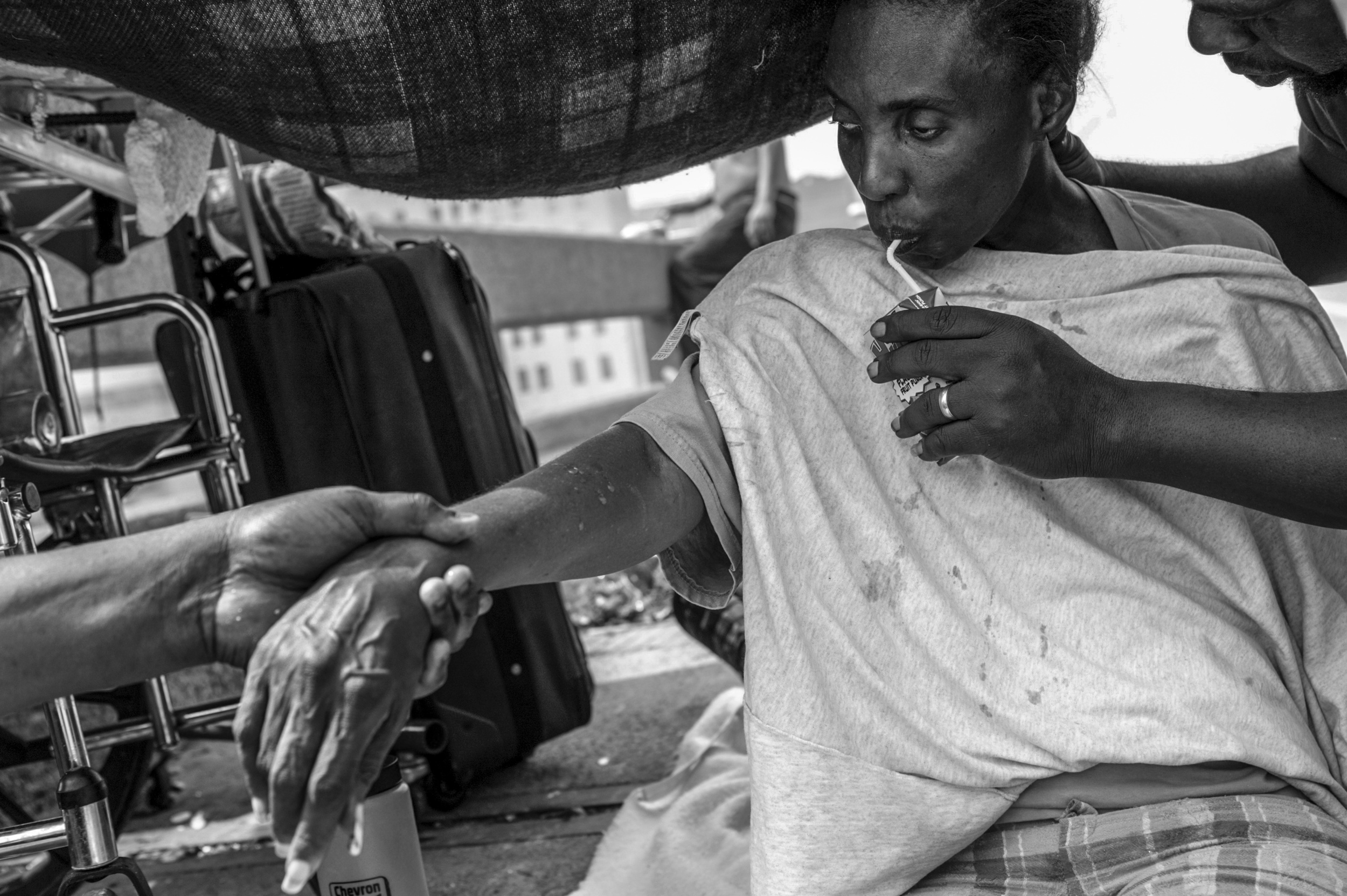
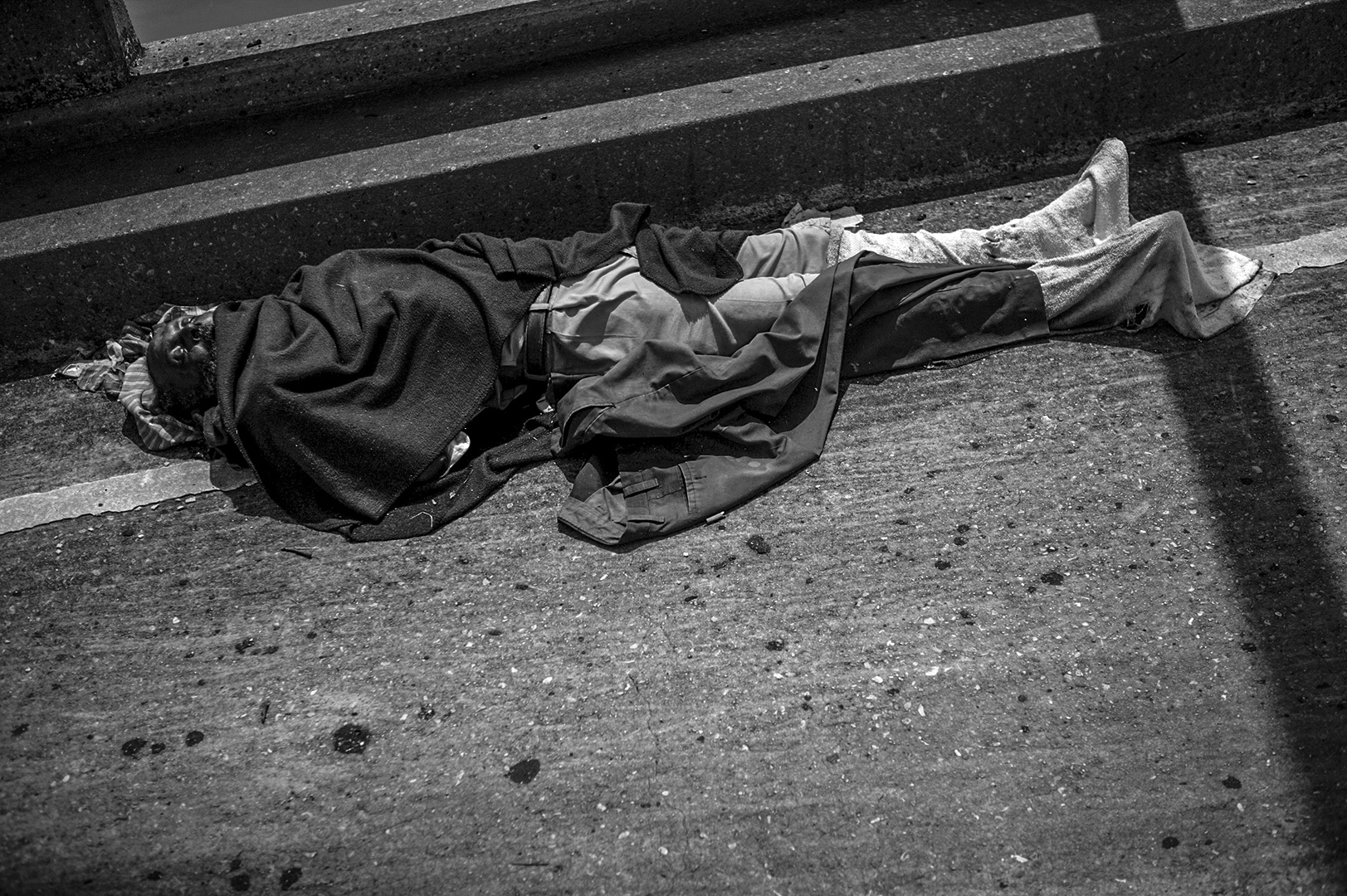
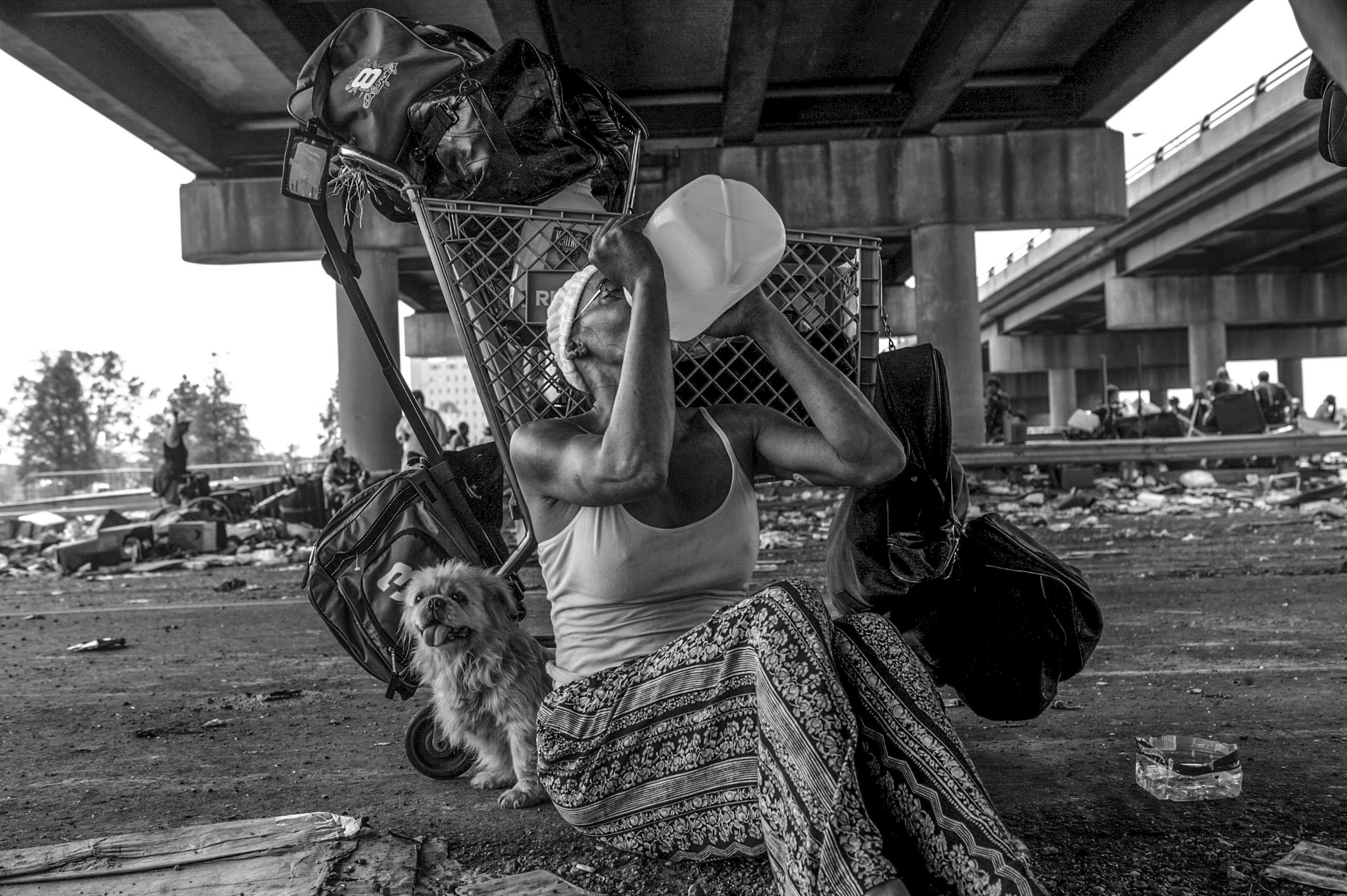
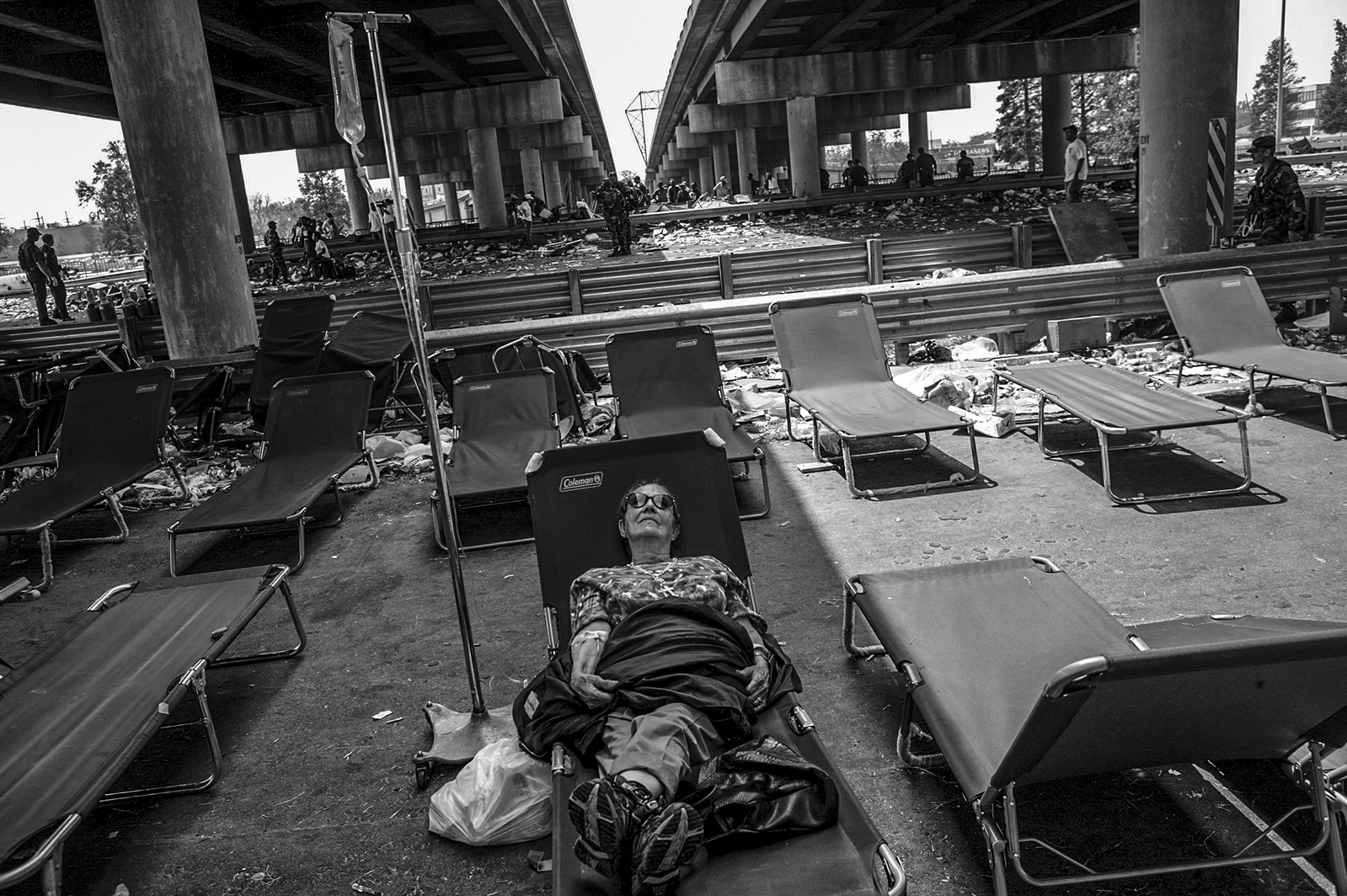
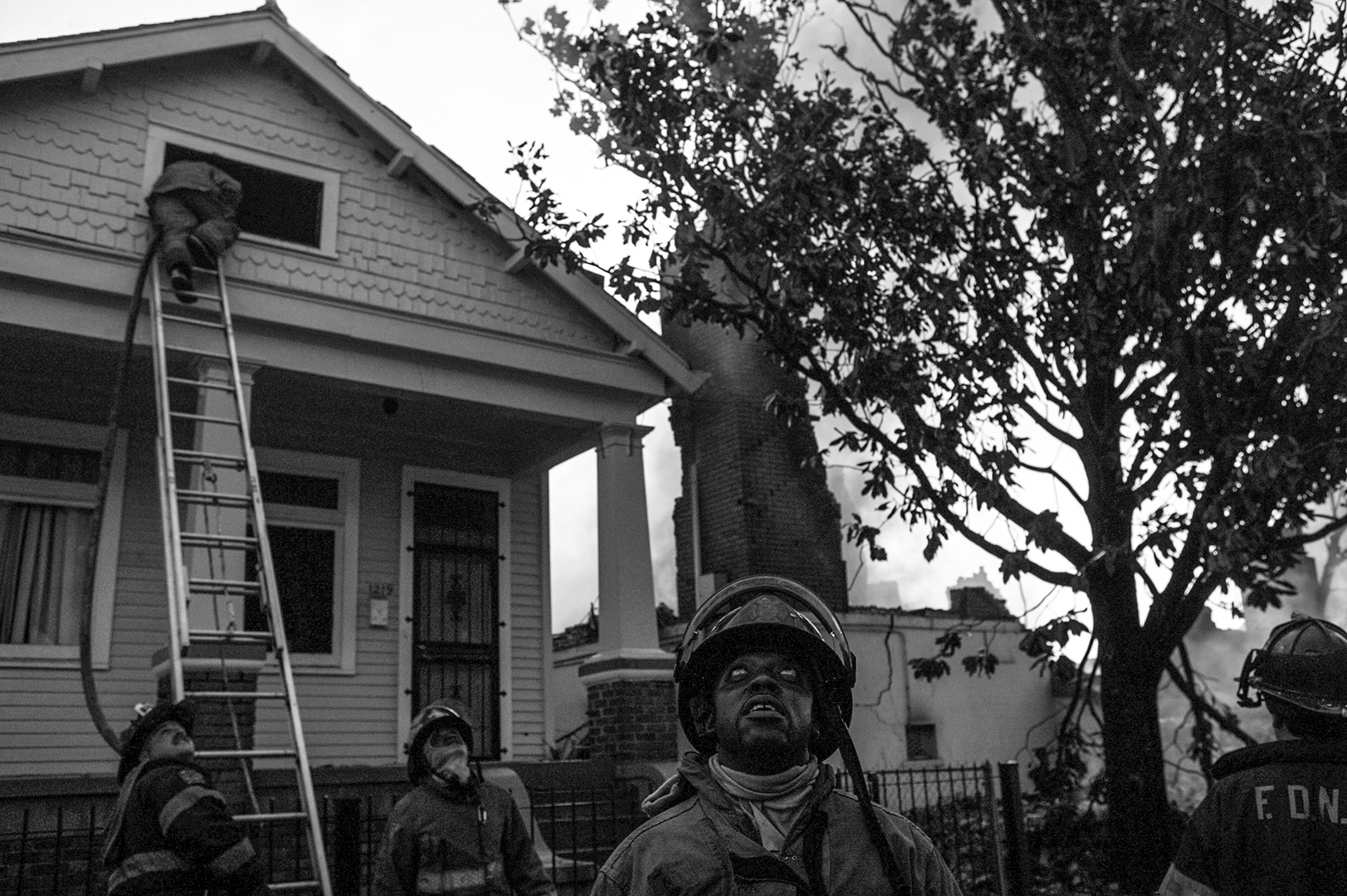
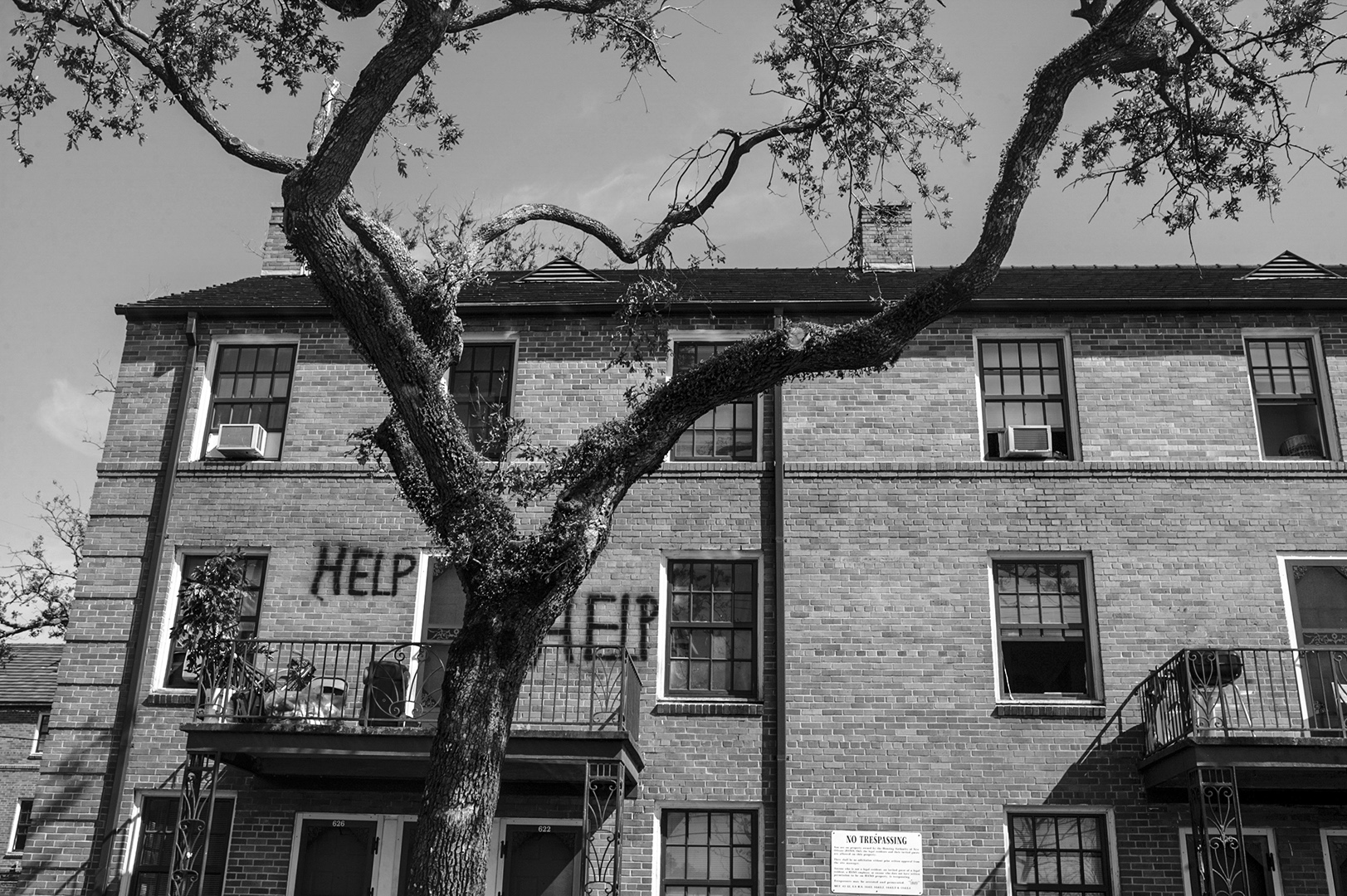
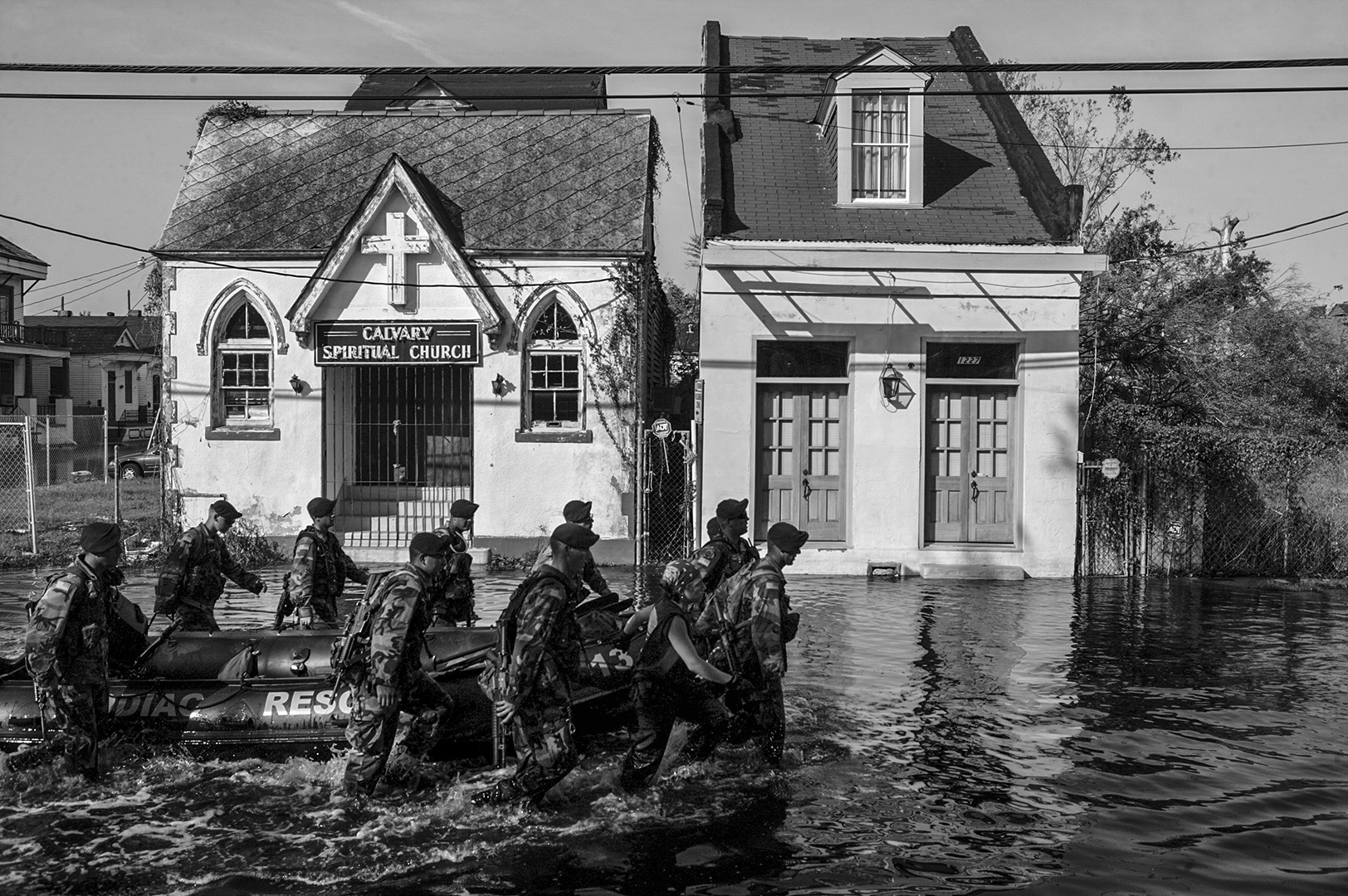
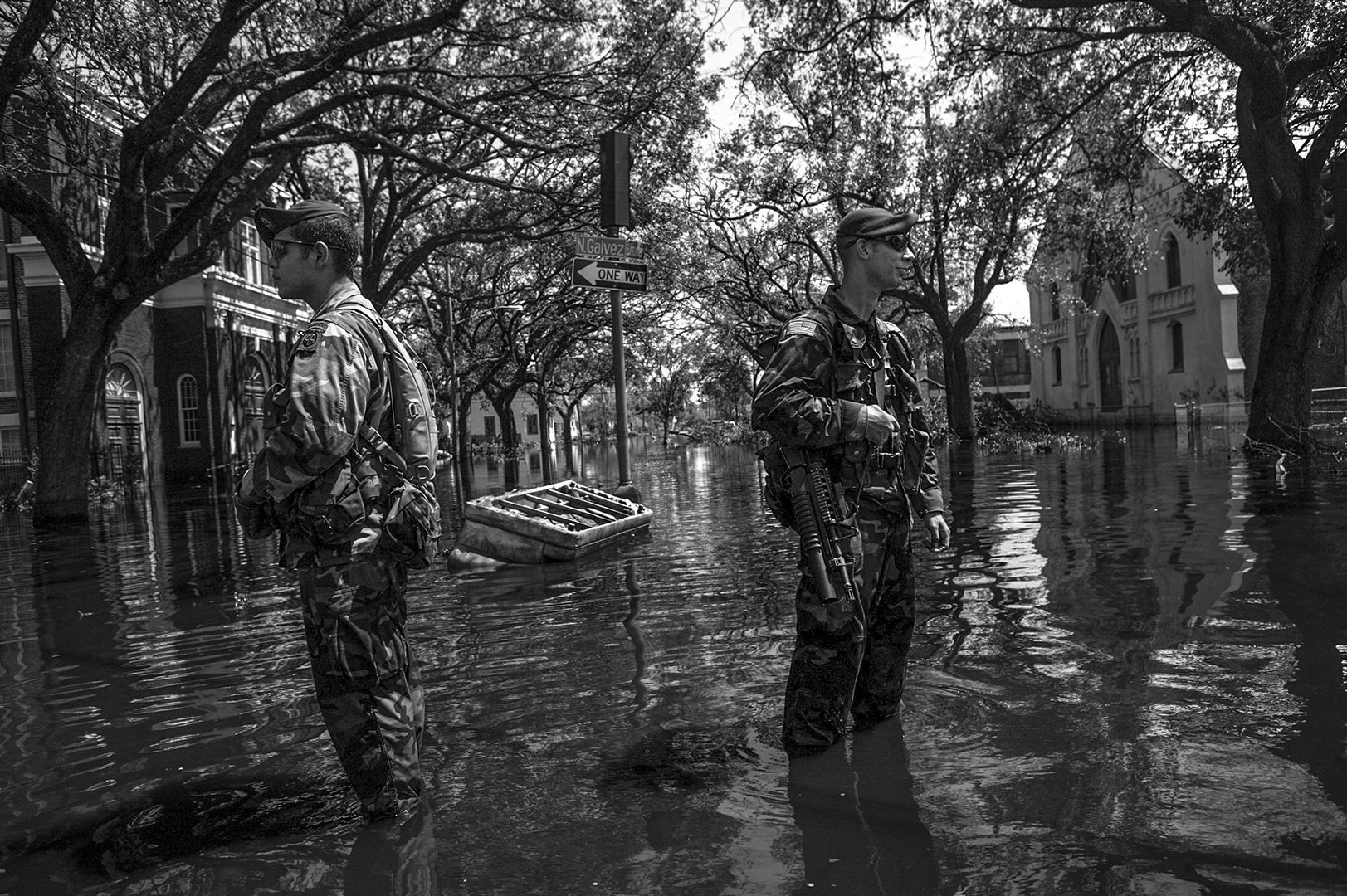
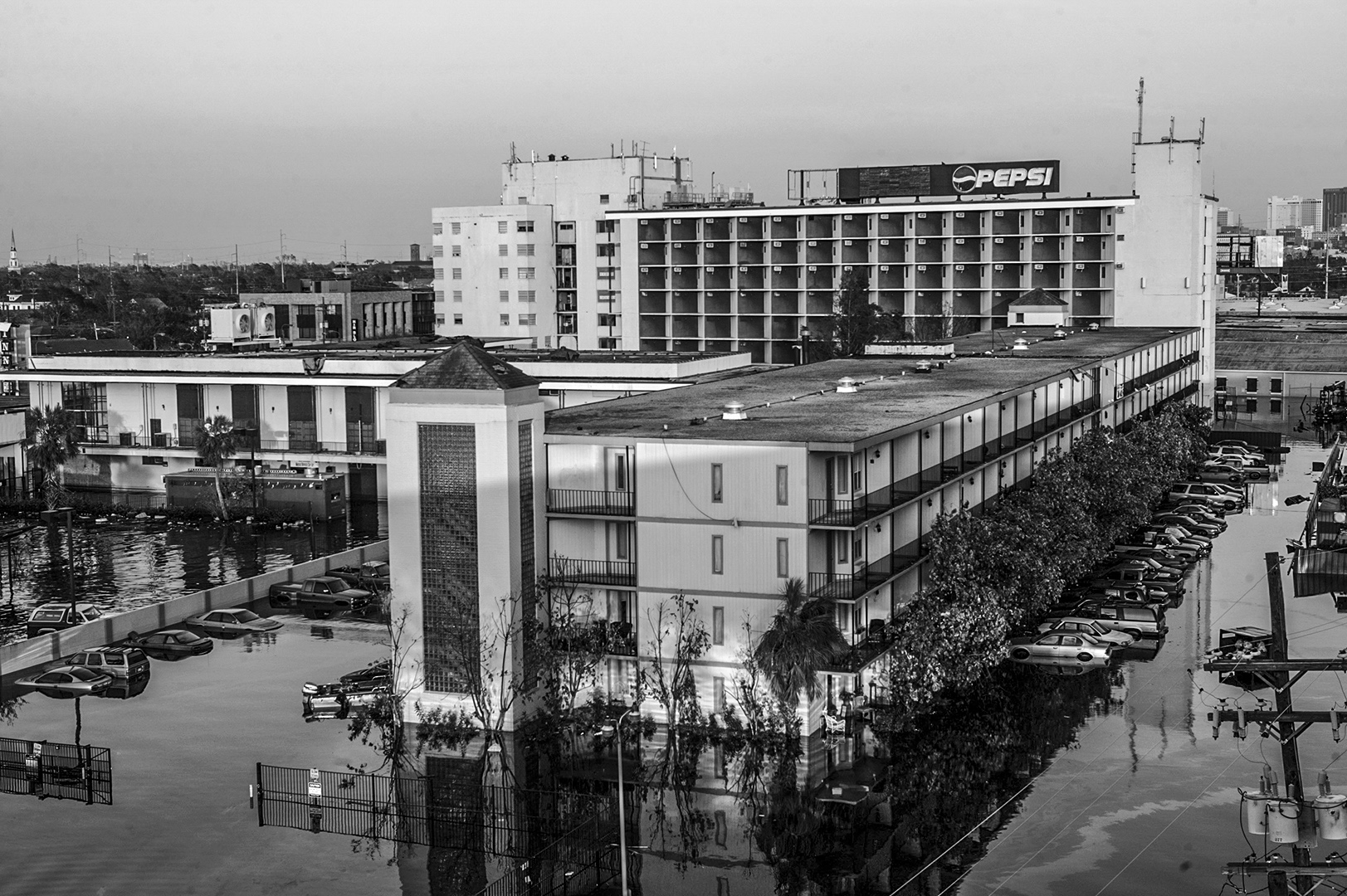
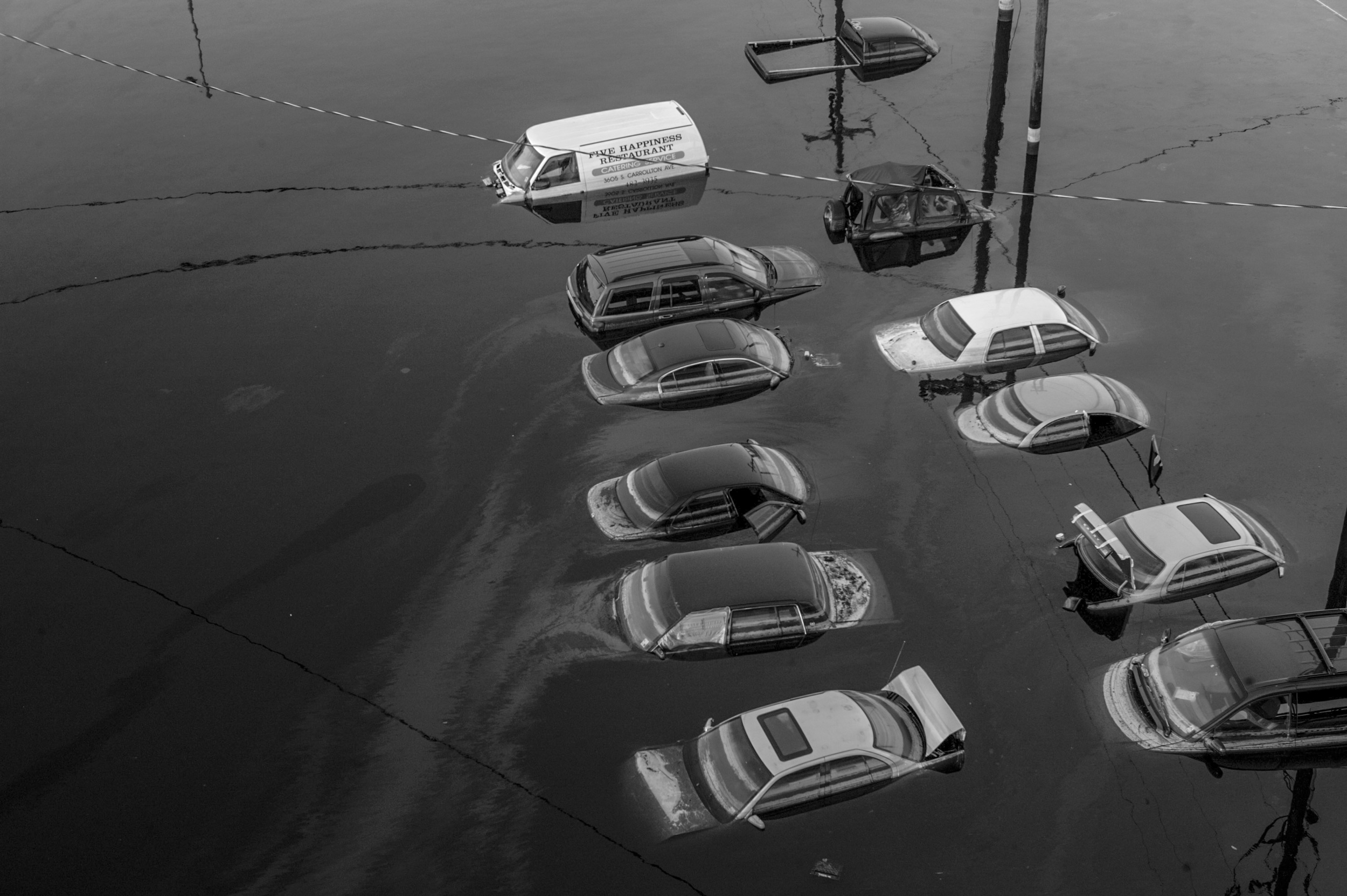
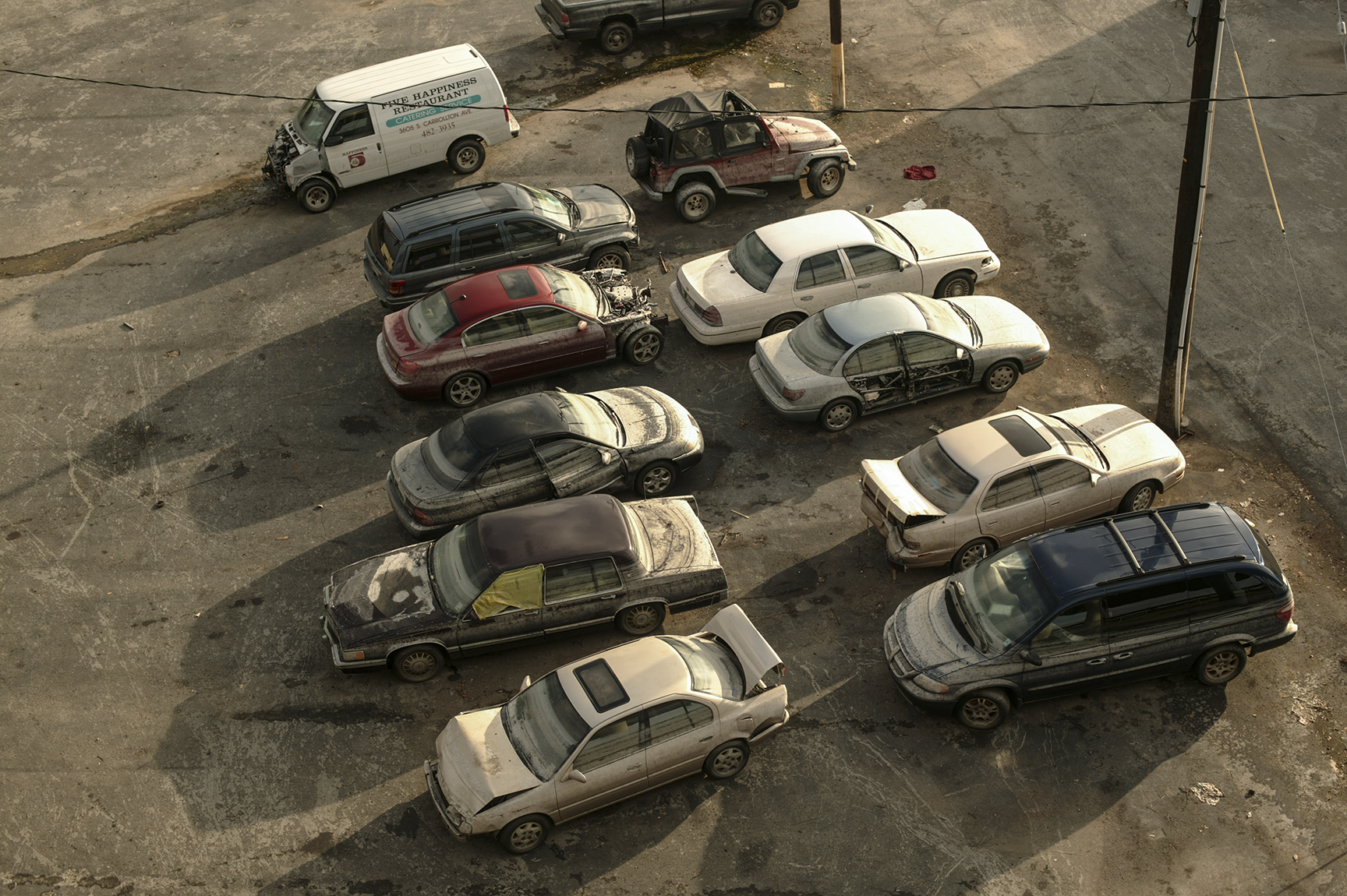

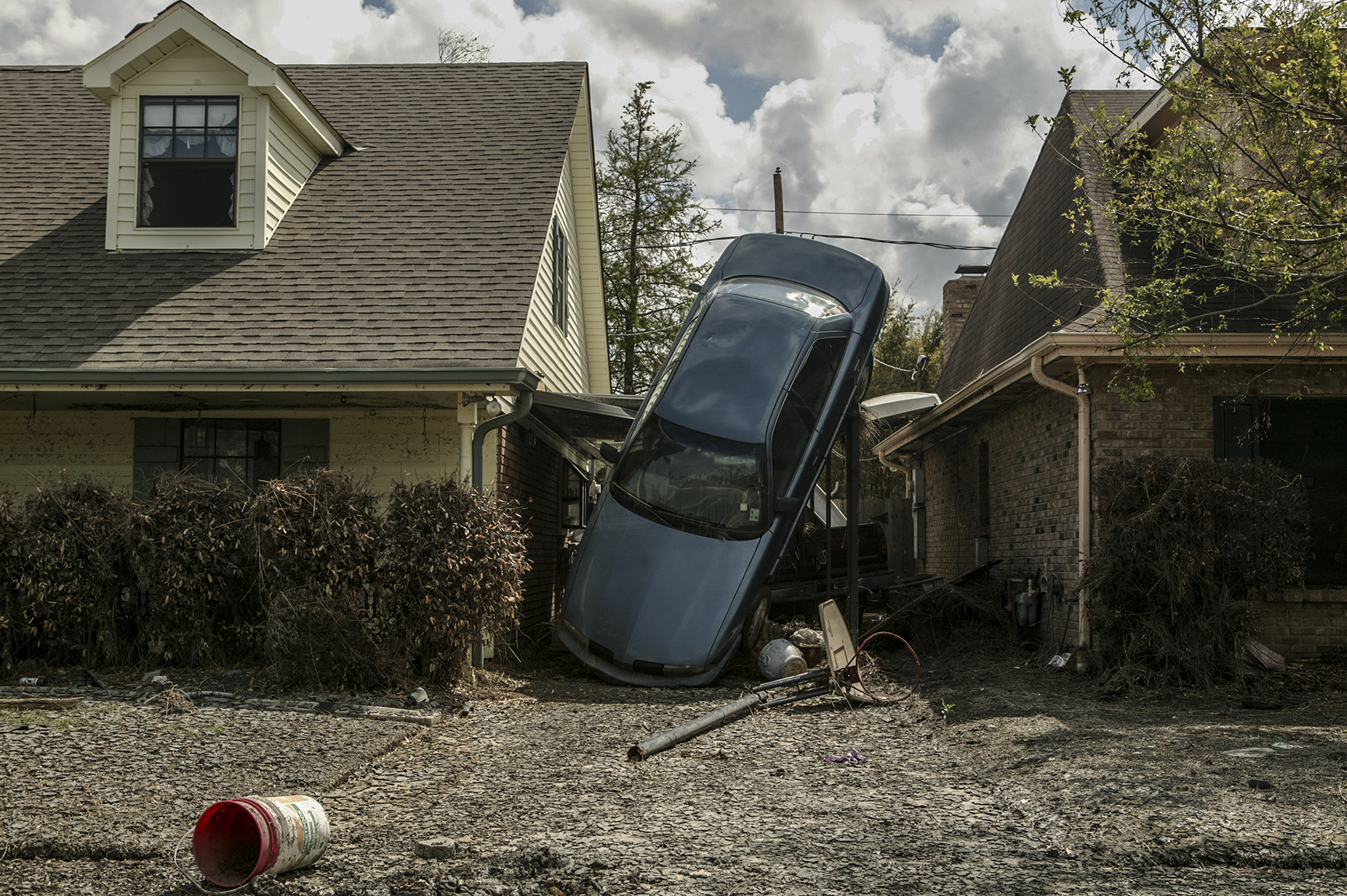
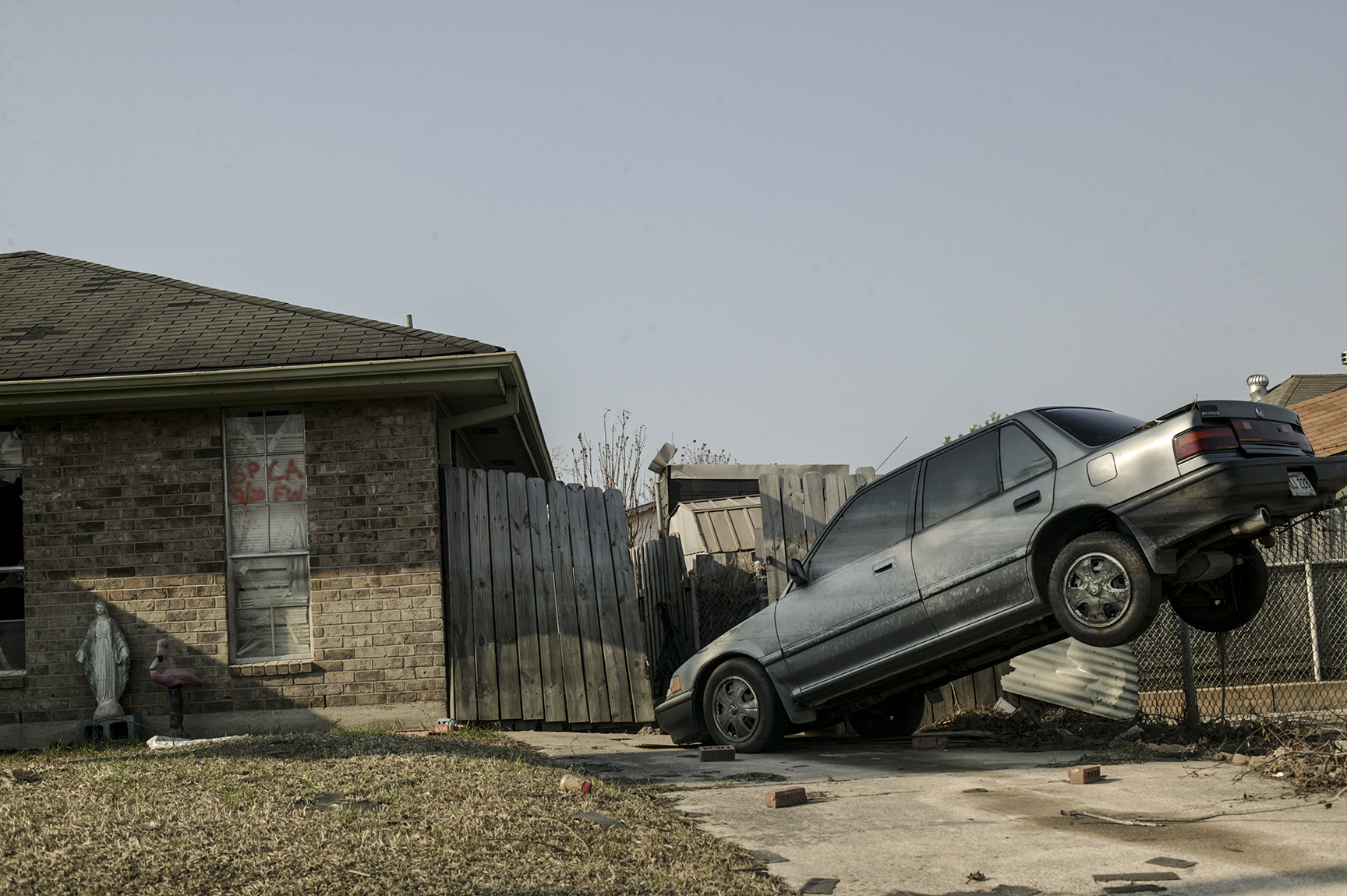
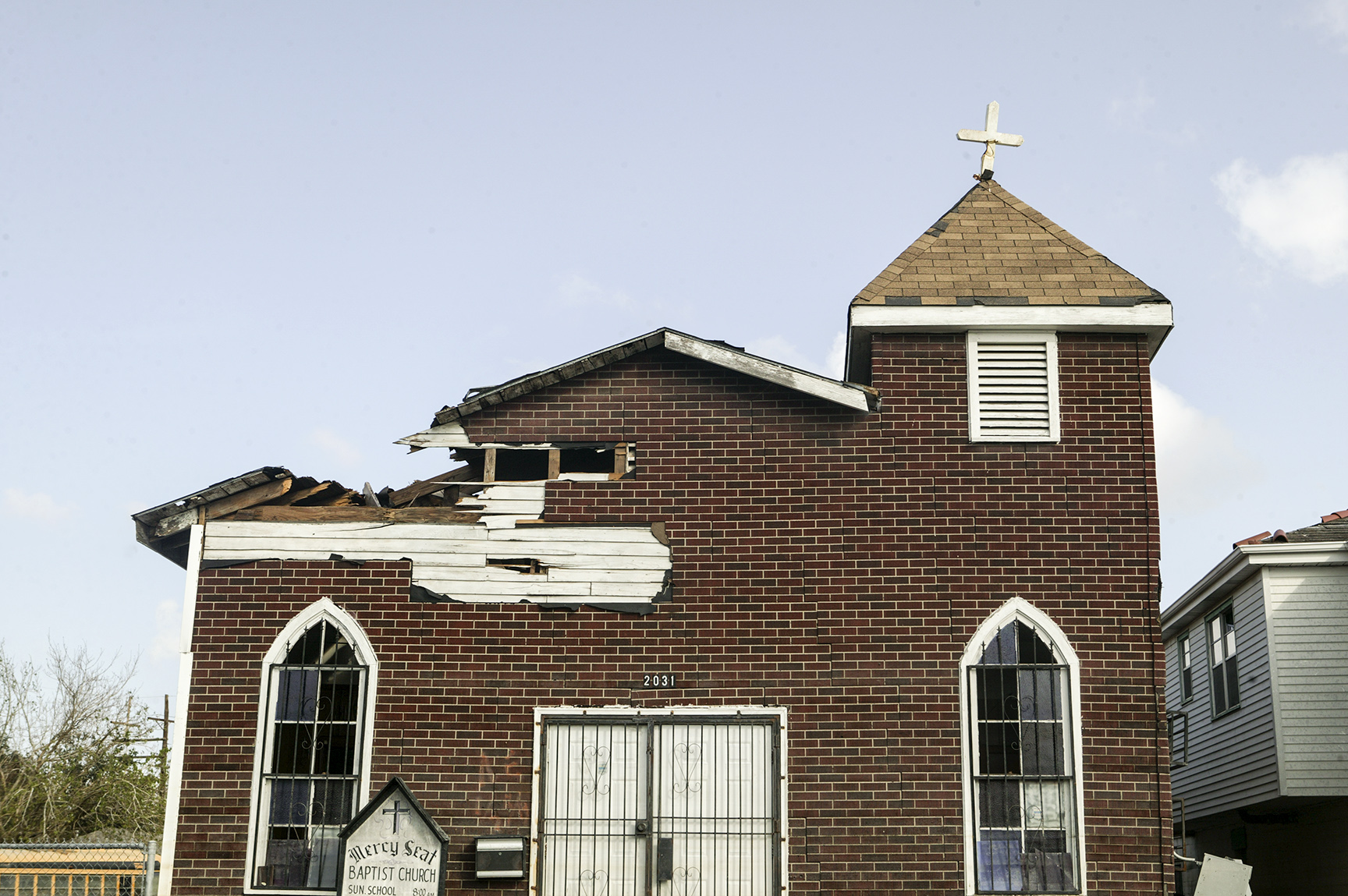
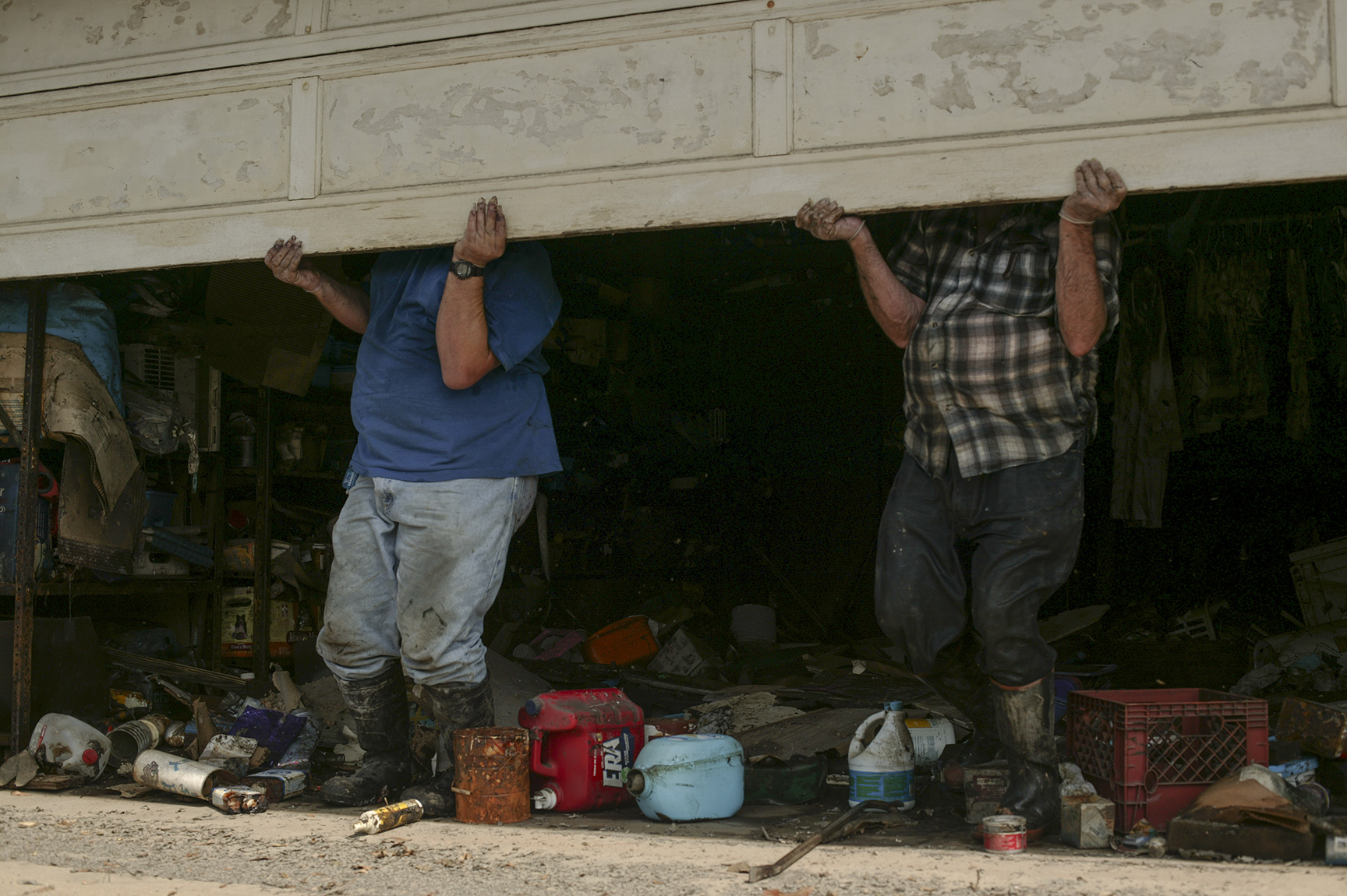
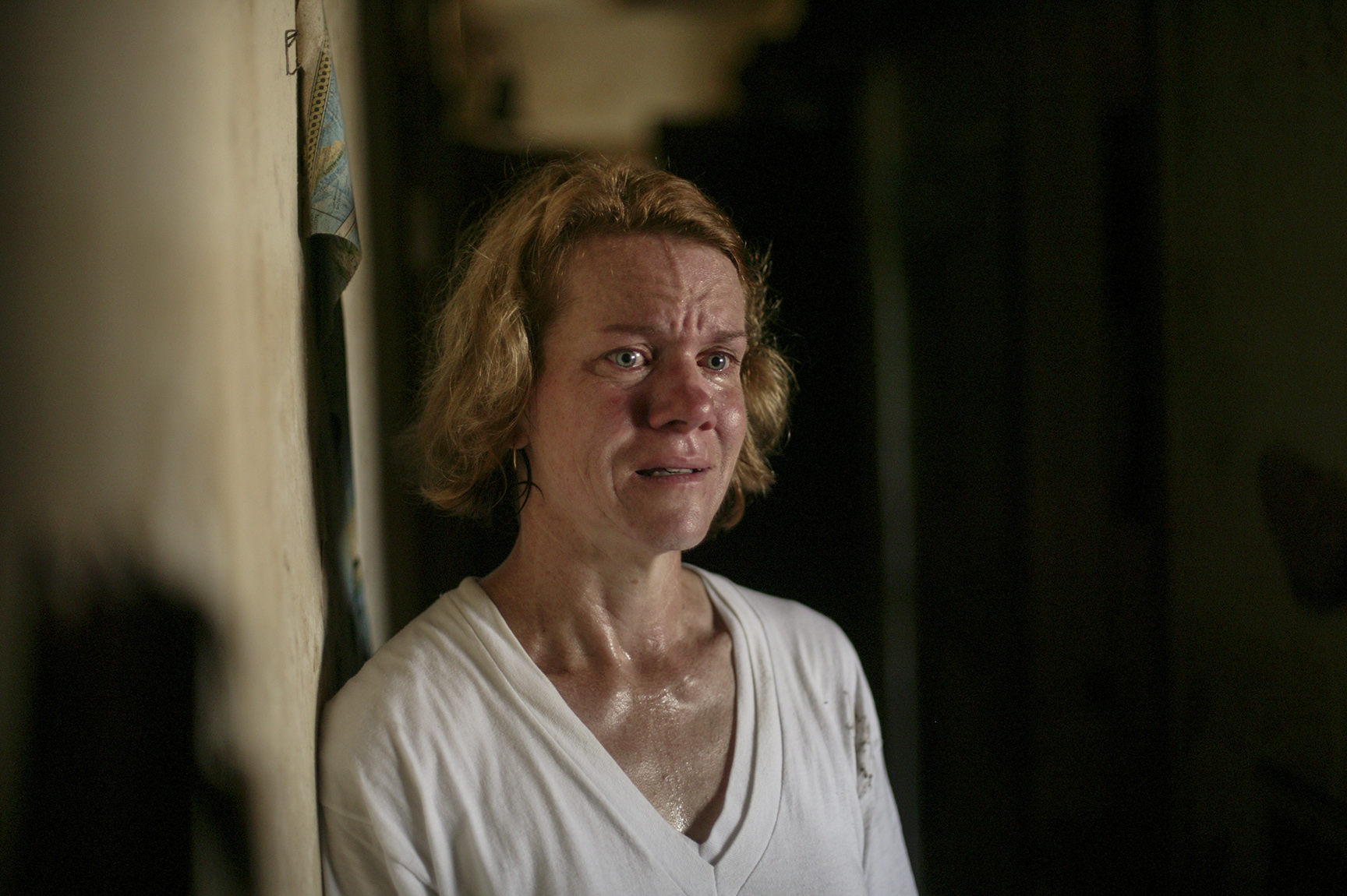
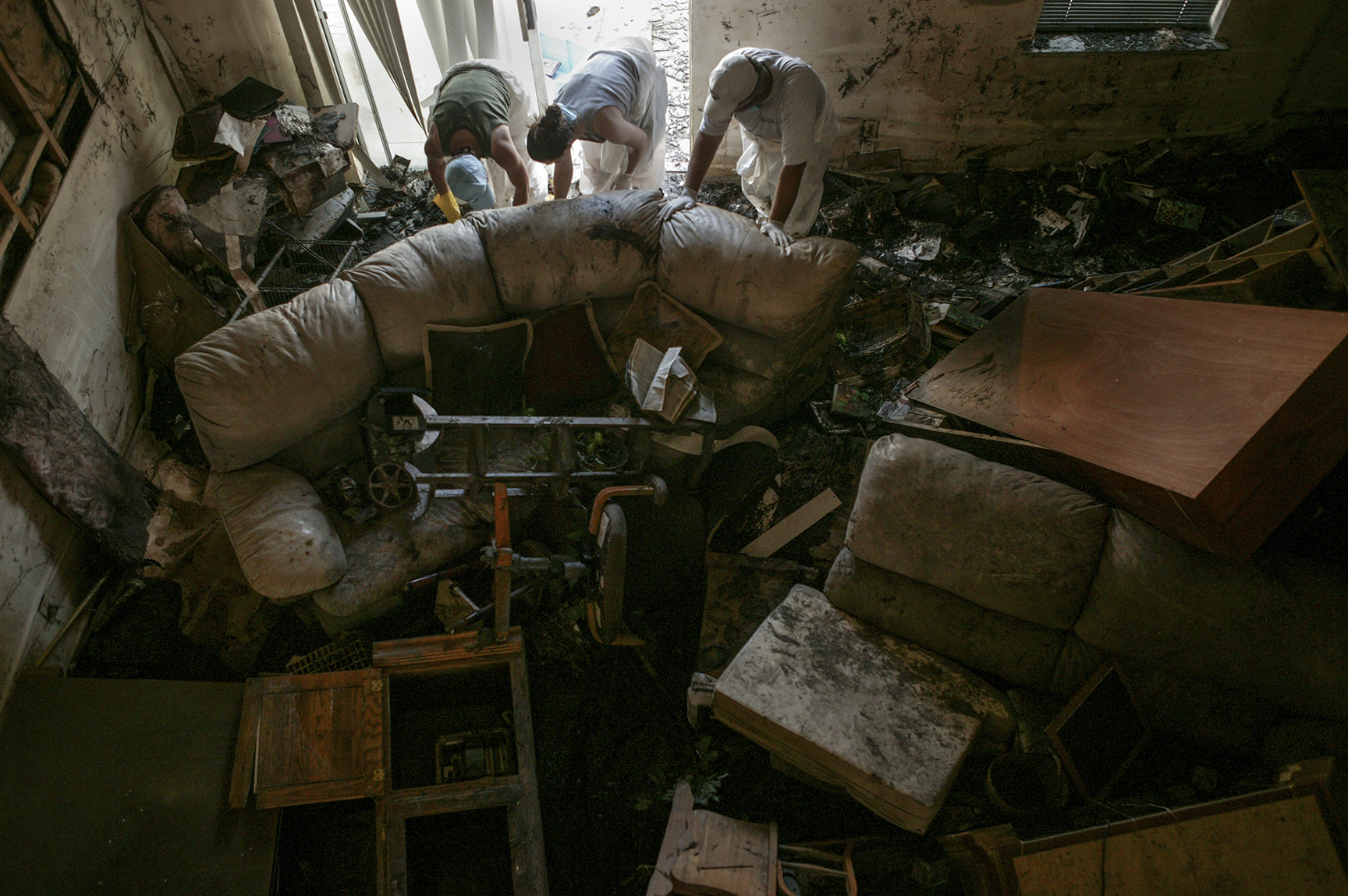
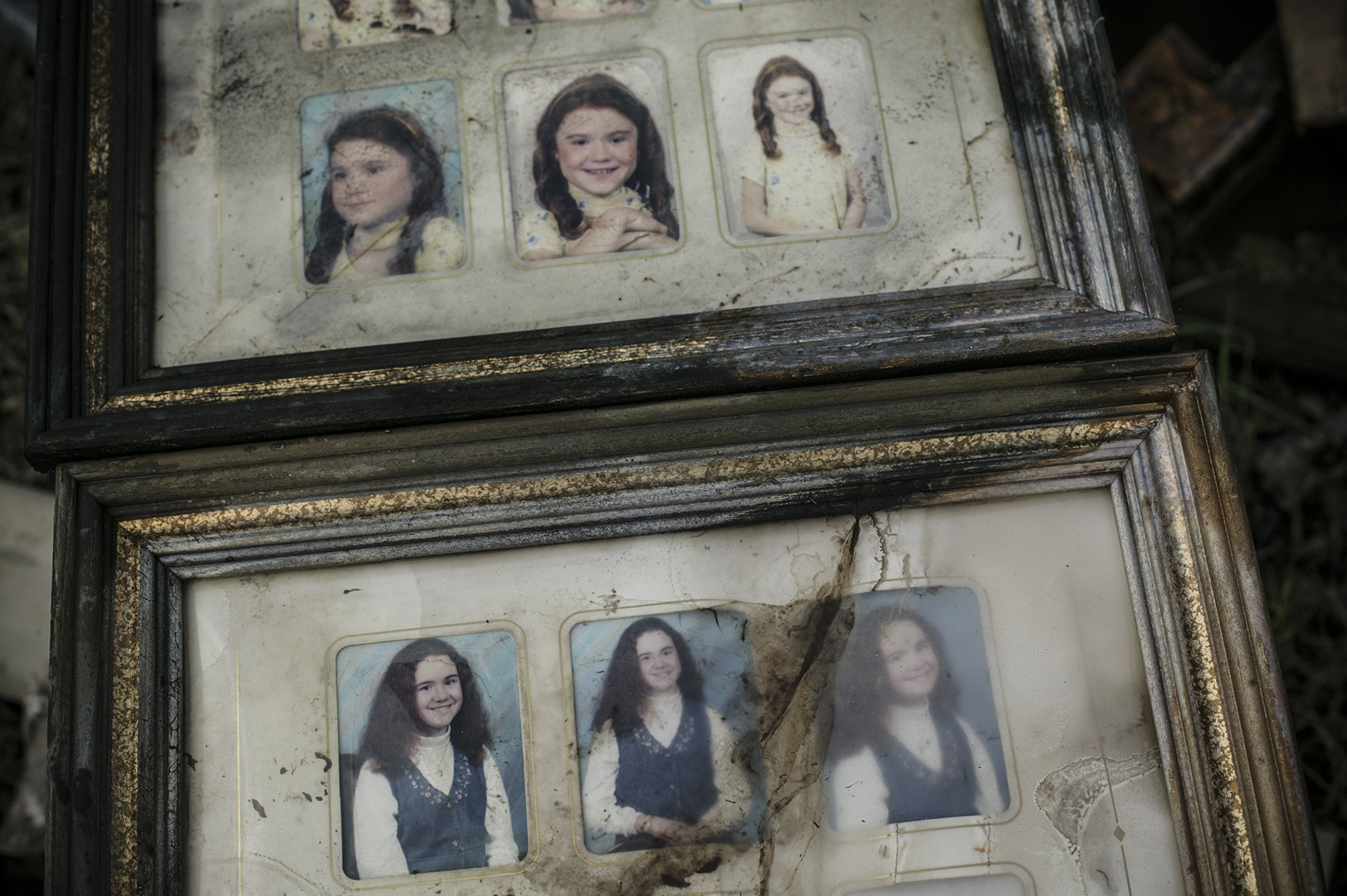
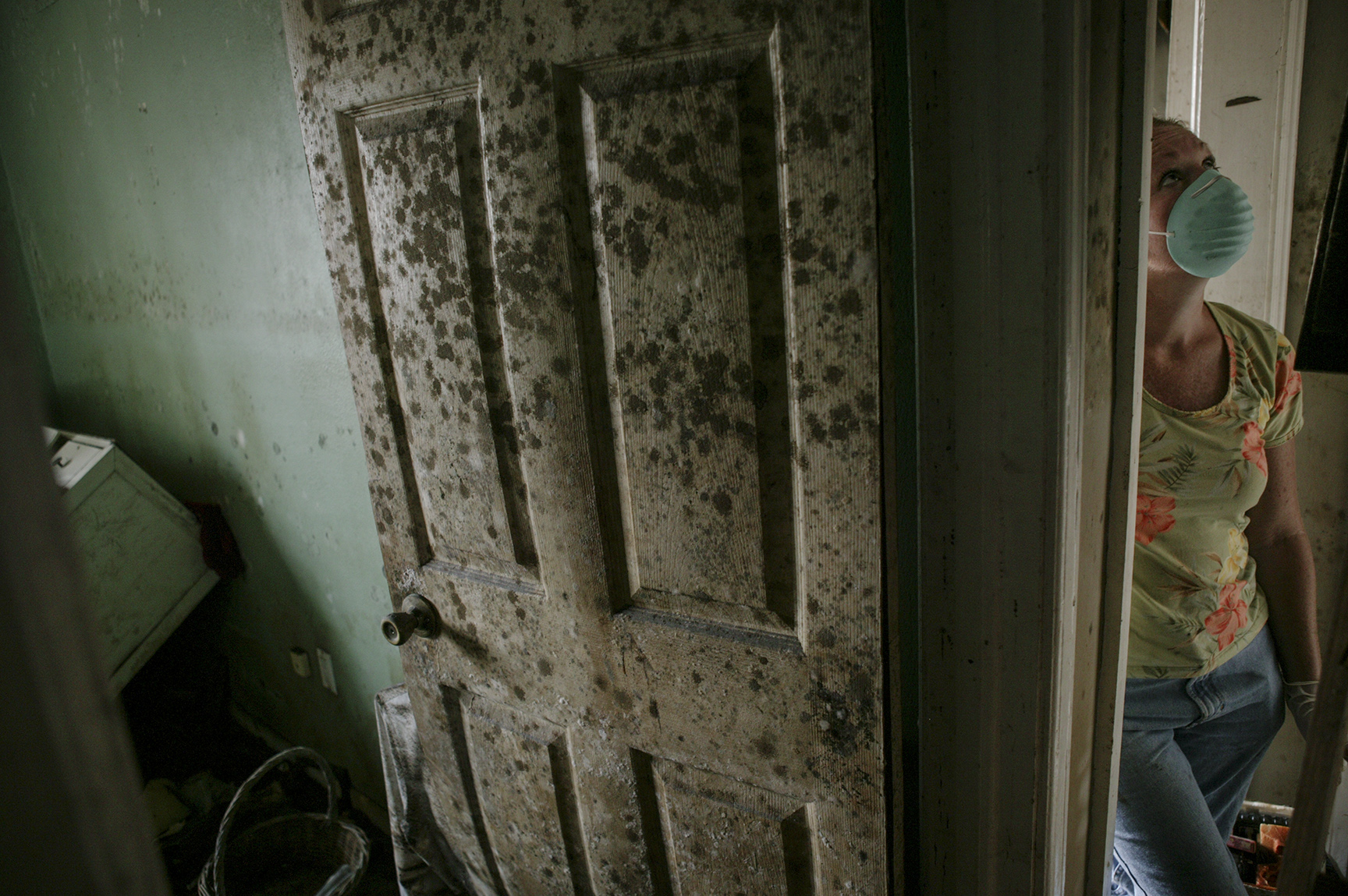
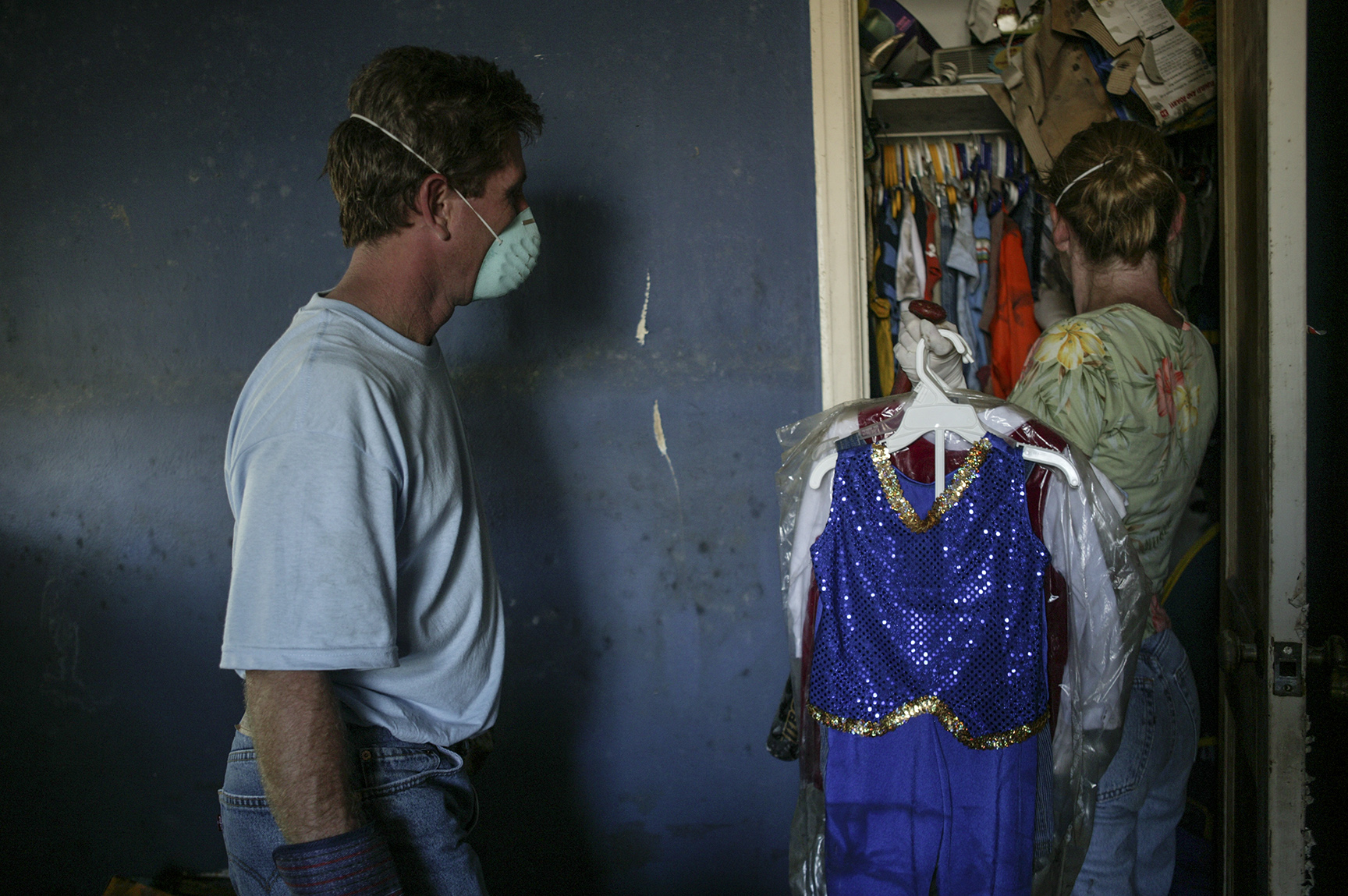
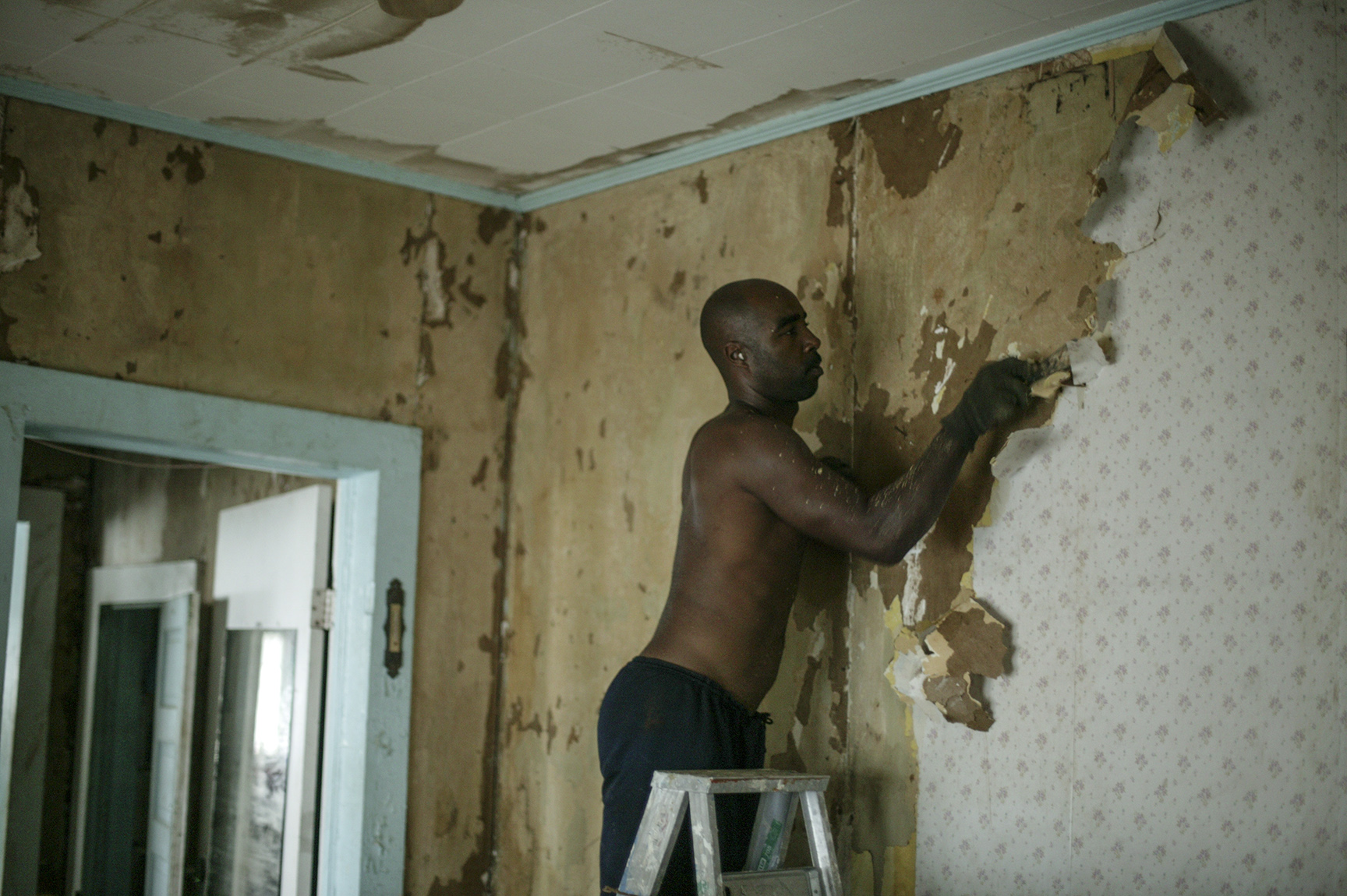
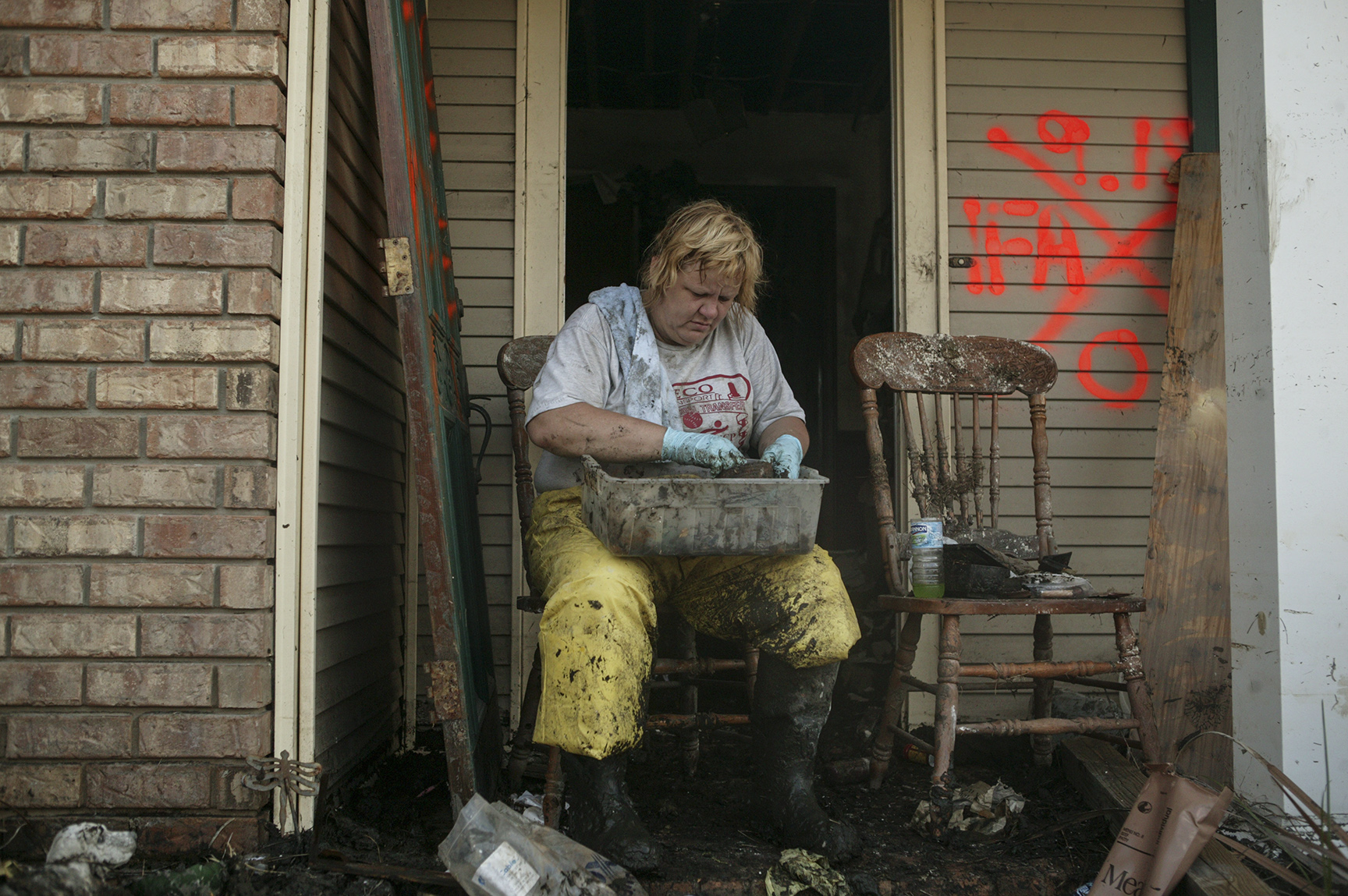
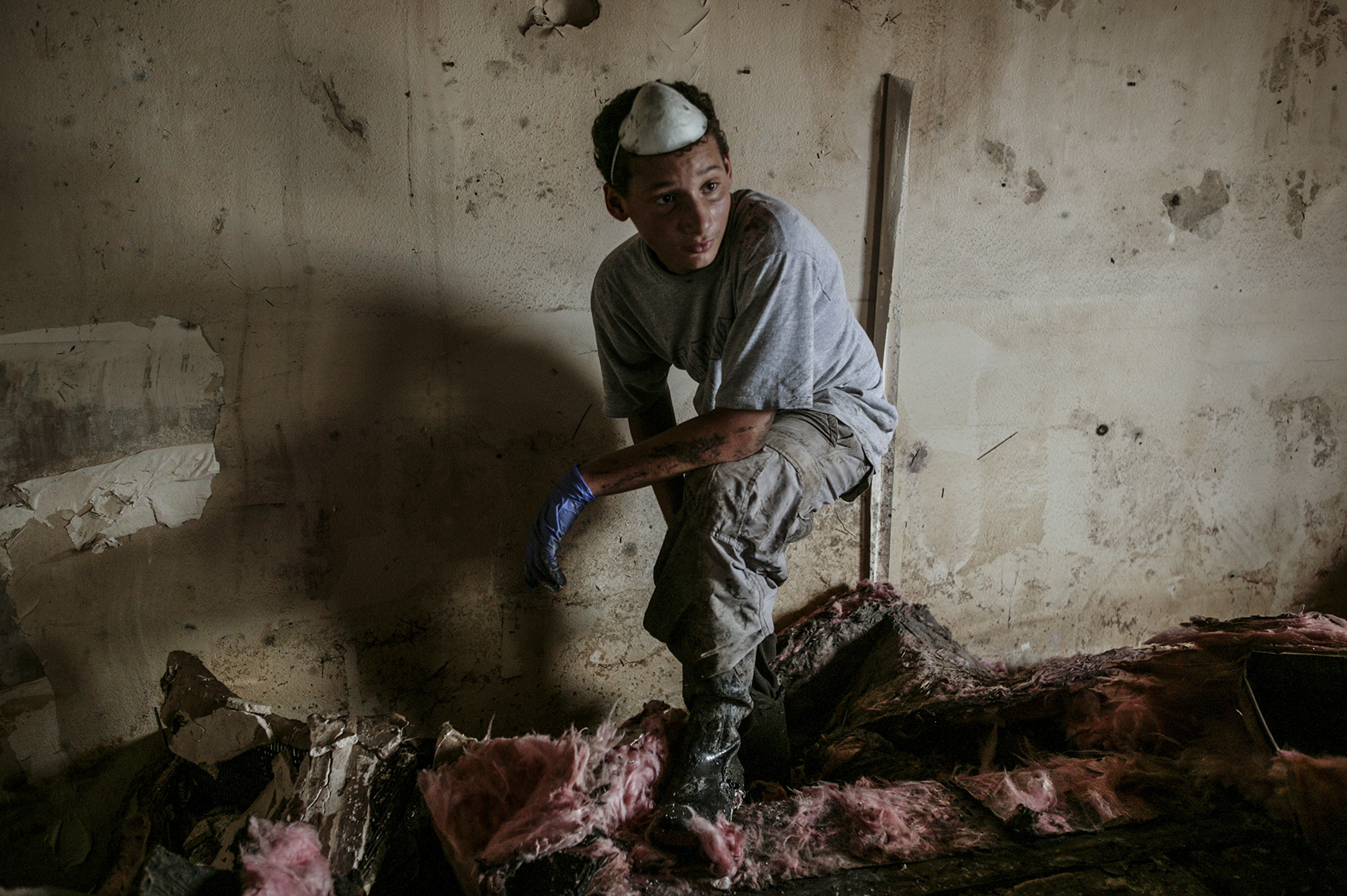
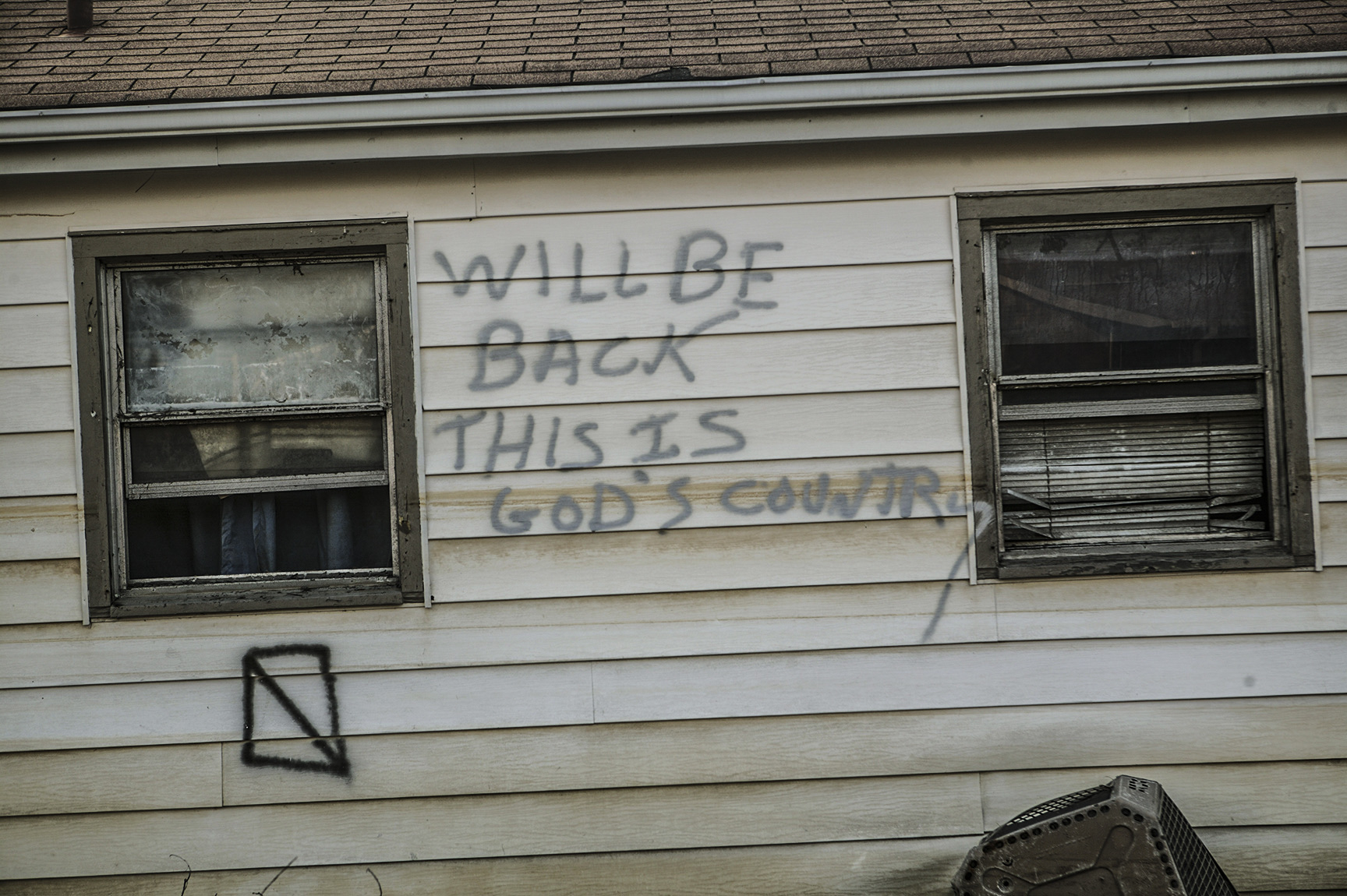
New Orleans, Louisiana - Early In the morning on August 29, 2005 Hurricane Katrina made landfall in the Gulf Coast of the United States. With winds up to 140 mile per-hour the storm caused significant damage, however the failure of the levee system resulted in the heavy flooding and the loss of life which ensued.
For up to four days almost 300 New Orleans residents, mostly African Americans, were stranded on Interstate 10 until they were finally rescued by aid helicopters. During the four days on this asphalt camp they ran out of water, food and medicine. People died waiting for help.
Helpless New Orleans residents stranded on interstate 10 provide shade for a man having a heart attack.
Exhausted - on the fourth day waiting to be rescued off Interstate 10.
An abandoned water truck on Interstate-10 became a means for washing for those stranded.
Sick and without her medication a woman is in dire need of medical treatment.
One of the unfortunate who died on Interstate 10.
Once rescued off the highway by helicopters they waited for transportation to shelters and hospitals.
Firefighters at the scene of a house fire.
Signs of stranded residents.
The National Guard were brought in for rescue operations and to maintain security.
The National Guard were brought in for rescue operations and to maintain security.
Returning to New Orleans on a second trip, 3-months later, the water had receded but the damage it caused was even more evident.
New Orleans, Louisiana - Early In the morning on August 29, 2005 Hurricane Katrina made landfall in the Gulf Coast of the United States. With winds up to 140 mile per-hour the storm caused significant damage, however the failure of the levee system resulted in the heavy flooding and the loss of life which ensued.
For up to four days almost 300 New Orleans residents, mostly African Americans, were stranded on Interstate 10 until they were finally rescued by aid helicopters. During the four days on this asphalt camp they ran out of water, food and medicine. People died waiting for help.
Helpless New Orleans residents stranded on interstate 10 provide shade for a man having a heart attack.
Exhausted - on the fourth day waiting to be rescued off Interstate 10.
An abandoned water truck on Interstate-10 became a means for washing for those stranded.
Sick and without her medication a woman is in dire need of medical treatment.
One of the unfortunate who died on Interstate 10.
Once rescued off the highway by helicopters they waited for transportation to shelters and hospitals.
Firefighters at the scene of a house fire.
Signs of stranded residents.
The National Guard were brought in for rescue operations and to maintain security.
The National Guard were brought in for rescue operations and to maintain security.
Returning to New Orleans on a second trip, 3-months later, the water had receded but the damage it caused was even more evident.